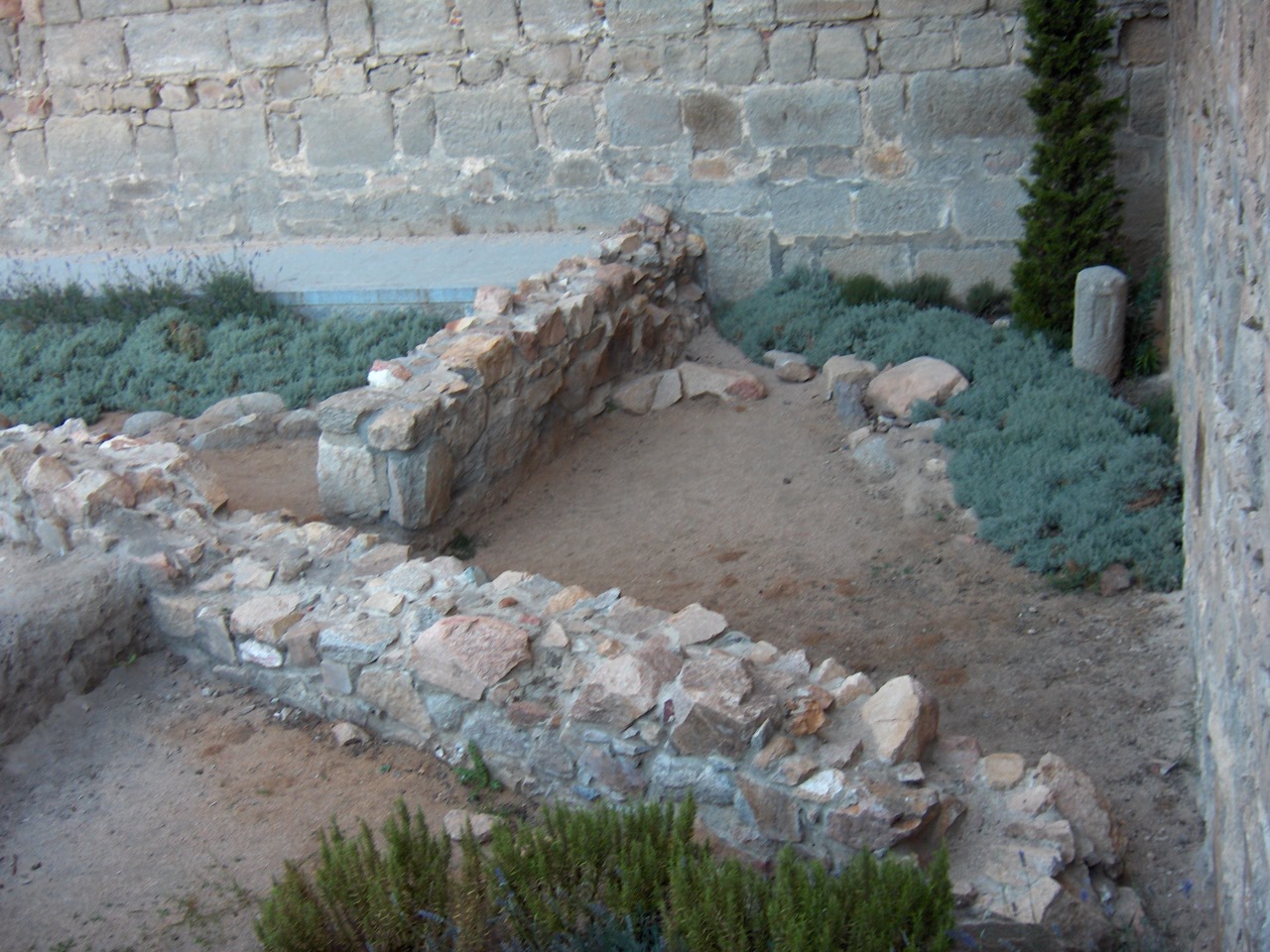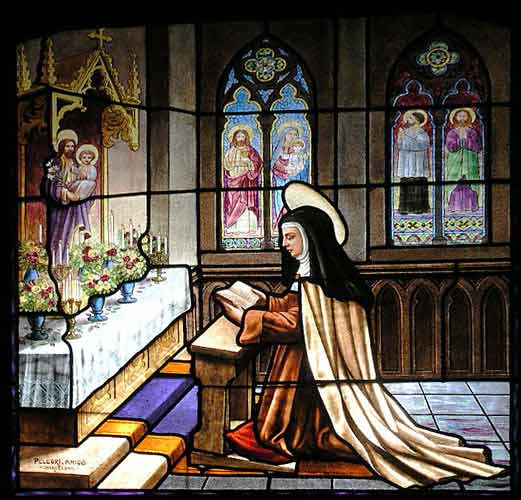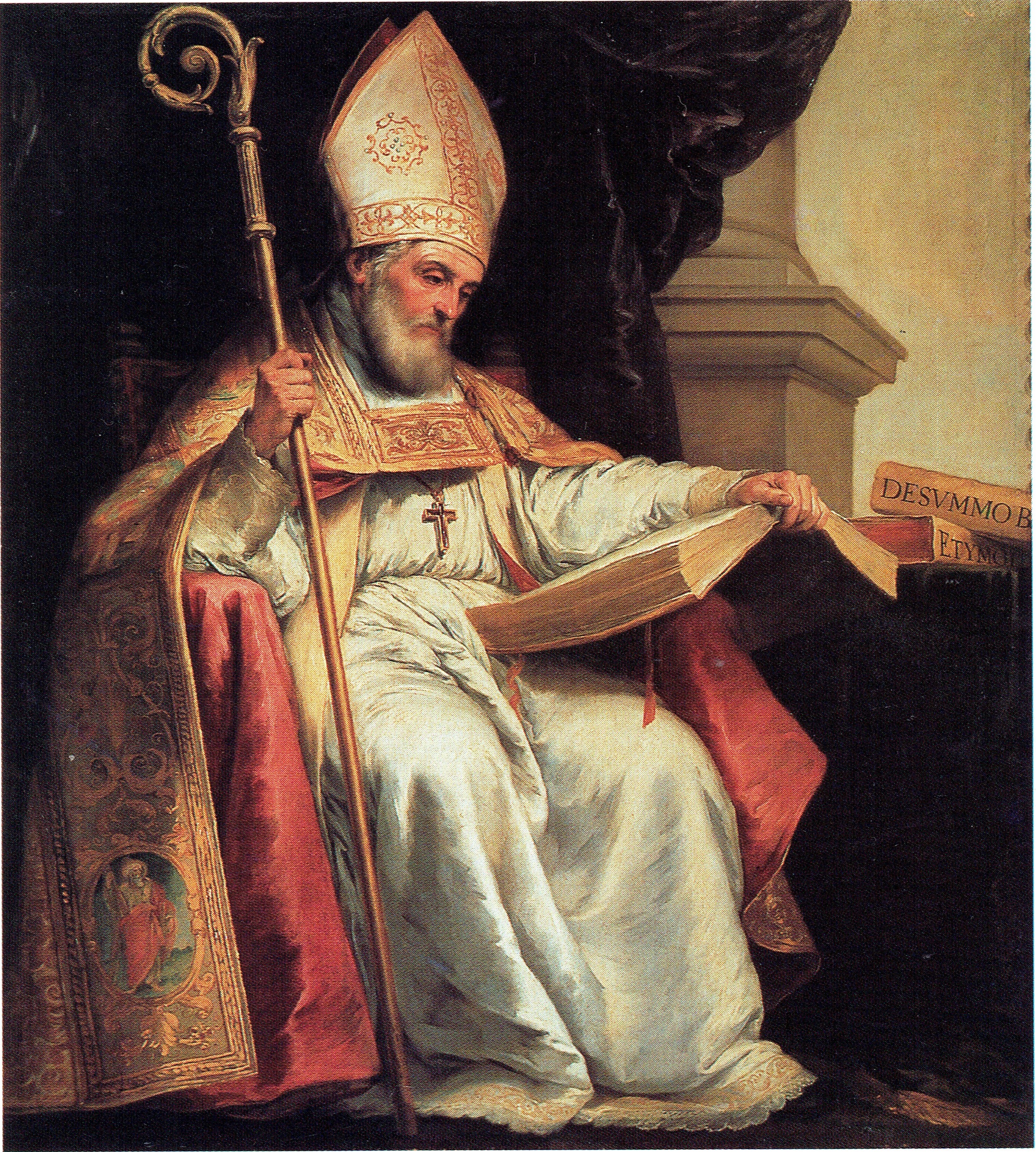|
├Īvila
├üvila is the capital and most populated Municipalities of Spain, municipality of the Province of ├üvila, located in the Autonomous communities of Spain, autonomous community of Castile and Le├│n in Spain. Located in the centre of the Iberian Peninsula, to the north of the Sistema Central, it lies on the right bank of the Adaja and, at an elevation of over above sea level, is the highest provincial capital in Spain. ├üvila is sometimes called the "City of Stones and Saints" due to its well-preserved medieval architecture (especially Walls of ├üvila, its Romanesque walls) and it being the home of religious figures such as Doctor of the Church, Doctors of the Church John of ├üvila, John and Teresa of ├üvila. The town also claims to have among the highest number of Romanesque architecture, Romanesque and Gothic architecture, Gothic churches per capita in Spain. For these reasons, in his book ''List of works by Jos├® Mart├Łnez Ruiz, El alma castellana'' (), writer Jos├® Mart├Łnez Ru ... [...More Info...] [...Related Items...] OR: [Wikipedia] [Google] [Baidu] |
Teresa Of Ávila
Teresa of ├üvila (born Teresa S├Īnchez de Cepeda D├Īvila y Ahumada; 28March 15154or 15October 1582), also called Saint Teresa of Jesus, was a Carmelite nun and prominent Spanish mystic and religious reformer. Active during the Counter-Reformation, Teresa became the central figure of a movement of spiritual and monastic renewal, reforming the Carmelite Orders of both women and men. The movement was later joined by the younger Carmelite friar and mystic Saint John of the Cross, with whom she established the Discalced Carmelites. A formal papal decree adopting the split from the old order was issued in 1580. Her autobiography, ''The Life of Teresa of Jesus'', and her books '' The Interior Castle'' and '' The Way of Perfection'' are prominent works on Christian mysticism and Christian meditation practice. In her autobiography, written as a defense of her ecstatic mystical experiences, she discerns four stages in the ascent of the soul to God: mental prayer and meditati ... [...More Info...] [...Related Items...] OR: [Wikipedia] [Google] [Baidu] |
Castile And Le├│n
Castile and Le├│n is an Autonomous communities of Spain, autonomous community in northwestern Spain. Castile and Le├│n is the largest autonomous community in Spain by area, covering 94,222 km2. It is, however, sparsely populated, with a population density below 30/km2. While Capital of Castile and Le├│n, a capital has not been explicitly declared, the seats of the executive and legislative powers are set in Valladolid by law, and for all purposes that city (also the most populated municipality) serves as the ''de facto'' regional capital. Castile and Le├│n is a landlocked region, bordered by Portugal as well as by the Spanish autonomous communities of Galicia (Spain), Galicia, Asturias, Cantabria, the Basque Autonomous Community, Basque Country, La Rioja (Spain), La Rioja, Aragon, CastillaŌĆōLa Mancha, the Community of Madrid and Extremadura. Chiefly comprising the northern half of the Meseta Central, Inner Plateau, it is surrounded by mountain barriers (the Cantabrian Mount ... [...More Info...] [...Related Items...] OR: [Wikipedia] [Google] [Baidu] |
Ávila (province)
├üvila ( , , ) is a Spain, Spanish city located in the Autonomous communities of Spain, autonomous community of Castile and Le├│n. It is the capital and most populated municipality of the Province of ├üvila. It lies on the right bank of the Adaja, Adaja river. Located more than 1,130 m above sea level, the city is the highest provincial capital in Spain. Distinctively known by Walls of ├üvila, its medieval walls, ├üvila is sometimes called the ''Town of Stones and Saints'', and it claims that it is one of the towns with the highest number of Romanesque and Gothic architecture, Gothic churches per capita in Spain. It has complete and prominent Middle Ages, medieval town walls, built in the Romanesque architecture, Romanesque style; writer Jos├® Mart├Łnez Ruiz, in his book ''El alma castellana'' ("The Castilian Soul"), described it as "perhaps the most 16th-century town in Spain". The town is also known as ''├üvila de los Caballeros'', ''├üvila del Rey'' and ''├üvila de los Leale ... [...More Info...] [...Related Items...] OR: [Wikipedia] [Google] [Baidu] |
For Ávila
For Ávila (, XAV) is a regional political party in Castile and León, centered in the province of Ávila. It was formed as a split from the People's Party (Spain), People's Party in January 2019 and officially registered as a political party on 18 February 2019. Electoral performance Ávila City Council Cortes of Castile and León Cortes Generales References {{Political parties in Spain Centrist parties in Spain Regionalist parties in Spain Political parties established in 2019 2019 establishments in Castile and León Political parties in Castile and León ... [...More Info...] [...Related Items...] OR: [Wikipedia] [Google] [Baidu] |
Centro Virtual Cervantes
Instituto Cervantes (, the Cervantes Institute) is a worldwide nonprofit organization created by the Spanish government in 1991. It is named after Miguel de Cervantes (1547ŌĆō1616), the author of ''Don Quixote'' and perhaps the most important figure in the history of Spanish literature. The Cervantes Institute is the largest organization in the world responsible for promoting the study and the teaching of Spanish language and culture. This organization has branched out to 45 countries with 88 centres devoted to the Spanish and Hispanic American culture and Spanish language. Article 3 of Law 7/1991, of March 21, created the Instituto Cervantes as a government agency. The law explains that the ultimate goals of the Institute are to promote the education, the study and the use of Spanish universally as a second language; to support the methods and activities that would help the process of Spanish language education, and to contribute to the advancement of the Spanish and Hispanic Am ... [...More Info...] [...Related Items...] OR: [Wikipedia] [Google] [Baidu] |
Doctor Of The Church
Doctor of the Church (Latin: ''doctor'' "teacher"), also referred to as Doctor of the Universal Church (Latin: ''Doctor Ecclesiae Universalis''), is a title given by the Catholic Church to saints recognized as having made a significant contribution to theology or doctrine through their research, study, or writing. , the Catholic Church has named 37 Doctors of the Church. Of these, the 18 who died before the East-West Schism, Great Schism of 1054 are also held in high esteem by the Eastern Orthodox Church, although it does not use the formal title ''Doctor of the Church''. Among the 37 recognised Doctors, 28 are from the West and nine from the East; four are women and thirty-three are men; one is an abbess, three are nuns, and one is a tertiary associated with a religious order; two are popes, 19 are bishops, twelve are priests, and one is a deacon; and 27 are from Europe, three are from Africa, and seven are from Asia. More Doctors (twelve) lived in the fourth century than any o ... [...More Info...] [...Related Items...] OR: [Wikipedia] [Google] [Baidu] |
John Of Ávila
John of ├üvila (; 6 January 1499ŌĆō 10 May 1569) was a Spanish priest, preacher, scholastic author, and religious mystic, who has been declared a saint and Doctor of the Church by the Catholic Church. He is called the " Apostle of Andalusia", for his extensive ministry in that region. Life Early years He was born in Almod├│var del Campo, in the modern-day Province of Ciudad Real, to Alfonso de ├üvila, of Jewish converso descent, and Catalina Xix├│n (or ''Gij├│n''), a wealthy and pious couple. At the age of fourteen, in 1513, he was sent to the University of Salamanca to study law; he withdrew in 1517, however, without receiving a degree. Returning home, ├üvila spent the next three years in the practice of austere piety. His sanctity impressed a Franciscan friar journeying through Almod├│var, on whose advice he resumed his studies by matriculating at the University of Alcal├Ī de Henares (which was moved to the national capital in the 19th century and renamed the Compl ... [...More Info...] [...Related Items...] OR: [Wikipedia] [Google] [Baidu] |
Adaja
The Adaja is a river of Spain located in the centre of the Iberian Peninsula, a major left-bank tributary of the Douro. Featuring a total length of 163 km, its river basin drains an area of 5,328 km2. It has its source in the so-called Fuente Berroque├▒a ( Villatoro, province of ├üvila A province is an administrative division within a country or state. The term derives from the ancient Roman , which was the major territorial and administrative unit of the Roman Empire's territorial possessions outside Italy. The term ''provi ...), near the saddle point between and the Sierra de ├üvila. Initially following a Southwest-Northeast course through the Ambl├®s Valley, the Adaja bends towards the North in ├üvila. It receives the contribution of its most important tributary, the Eresma, near Matapozuelos, emptying in the Douro in the province of Valladolid near the town of Aniago. References Tributaries of the Douro River {{Spain-river-stub ... [...More Info...] [...Related Items...] OR: [Wikipedia] [Google] [Baidu] |
Church Of San Mart├Łn (├üvila)
St. Martin's Church or St. Martin of Tours Church may refer to any one of a number of churches. These are mostly dedicated to Martin of Tours. They include: Belgium *St Martin's Church, Aalst *St Martin's Church, Arlon *; see Georges-Jacques Aelsters *Saint Martin's Church (Kortrijk) *Saint Martin's Church (Ypres), formerly a cathedral Croatia * St Martin's Church (Split) Denmark * St. Martin's Church (N├”stved) Estonia * (Saint Martin's Church of K├żina), a church in Estonia * Valjala church (Saint Martin's Church of Valjala) France Alsace * Saint-Martin Church, Colmar * * ├ēglise Saint-Martin, Marmoutier Auvergne * St Martin's Church, Chavenon, in the Allier ''d├®partement'' * ├ēglise Saint-Martin, in Montlu├¦on in the Allier ''d├®partement'' Bourgogne * ├ēglise Saint-Martin, in Murlin Bretagne *, Brest Centre * ├ēglise Saint-Martin d'Amilly, Amilly, Loiret * ├ēglise Saint-Martin de Beaune-la-Rolande, Beaune-la-Rolande * ├ēglise Saint-Martin (Mardi├®), Mardi├® * ... [...More Info...] [...Related Items...] OR: [Wikipedia] [Google] [Baidu] |
Sistema Central
The Central System, Spanish language, Spanish and , is one of the main systems of mountain ranges in the Iberian Peninsula. The 2,592 m high Pico Almanzor is its highest summit. The Central System is located just north of the 40th parallel north, 40th parallel and its ranges divide the Tagus Basin, drainage basin of the Tagus from the basin of the Douro. Description The Sistema Central is a primary feature of the Meseta Central, the inner Iberian plateau, splitting the meseta into two parts. The Sistema Central runs in an ENE - WSW direction roughly along the southern border of the Autonomous communities of Spain, Spanish autonomous community of Castile and Le├│n and Extremadura continuing into the Guarda District, Guarda and Castelo Branco District, Castelo Branco districts in Portugal. Unlike the neighboring Sistema Ib├®rico, the Sistema Central range is a quite homogeneous system. It consists of several ranges that formed 25 million years ago as part of the Alpine orogeny. Th ... [...More Info...] [...Related Items...] OR: [Wikipedia] [Google] [Baidu] |
Iberian Peninsula
The Iberian Peninsula ( ), also known as Iberia, is a peninsula in south-western Europe. Mostly separated from the rest of the European landmass by the Pyrenees, it includes the territories of peninsular Spain and Continental Portugal, comprising most of the region, as well as the tiny adjuncts of Andorra, Gibraltar, and, pursuant to the traditional definition of the Pyrenees as the peninsula's northeastern boundary, a small part of France. With an area of approximately , and a population of roughly 53 million, it is the second-largest European peninsula by area, after the Scandinavian Peninsula. Etymology The Iberian Peninsula has always been associated with the River Ebro (Ib─ōros in ancient Greek and Ib─ōrus or Hib─ōrus in Latin). The association was so well known it was hardly necessary to state; for example, Ib─ōria was the country "this side of the Ib─ōrus" in Strabo. Pliny the Elder, Pliny goes so far as to assert that the Greeks had called "the whole of the peninsula" Hi ... [...More Info...] [...Related Items...] OR: [Wikipedia] [Google] [Baidu] |
Autonomous Communities Of Spain
The autonomous communities () are the first-level political divisions of Spain, administrative divisions of Spain, created in accordance with the Constitution of Spain, Spanish Constitution of 1978, with the aim of guaranteeing limited autonomy to the nationalities and regions of Spain, nationalities and regions that make up Spain. There are 17 autonomous communities and two autonomous cities (Ceuta and Melilla) that are collectively known as "autonomies". The two autonomous cities have the right to become autonomous communities. The autonomous communities exercise their right to self-government within the limits set forth in the constitution and Organic Law (Spain), organic laws known as Statute of Autonomy, Statutes of Autonomy, which broadly define the powers that they assume. Each statute sets out the devolved powers () for each community; typically those communities with stronger local nationalism have more powers, and this type of devolution has been called ''asymmetric ... [...More Info...] [...Related Items...] OR: [Wikipedia] [Google] [Baidu] |







